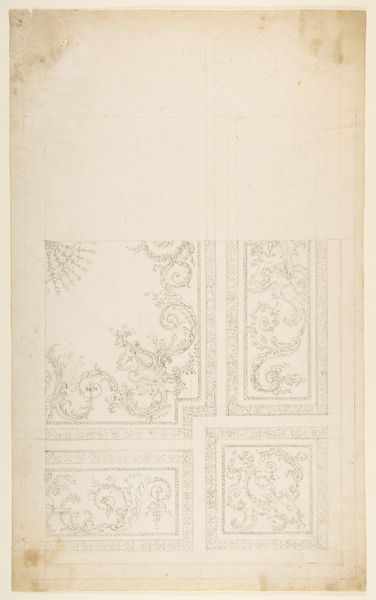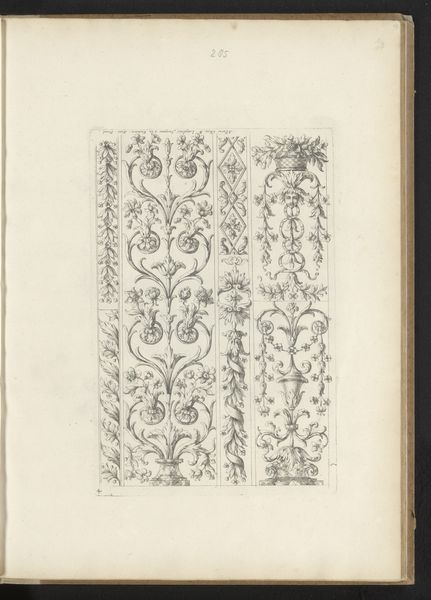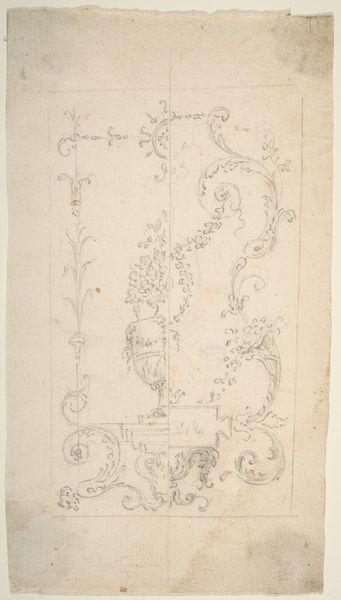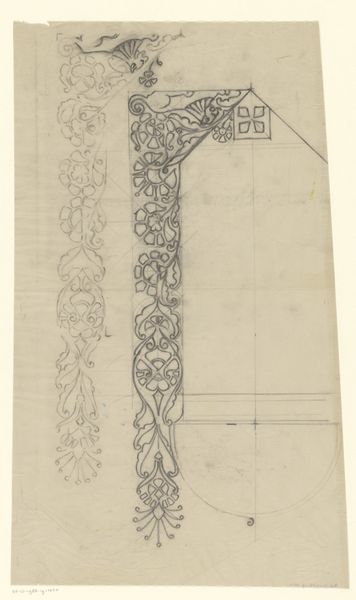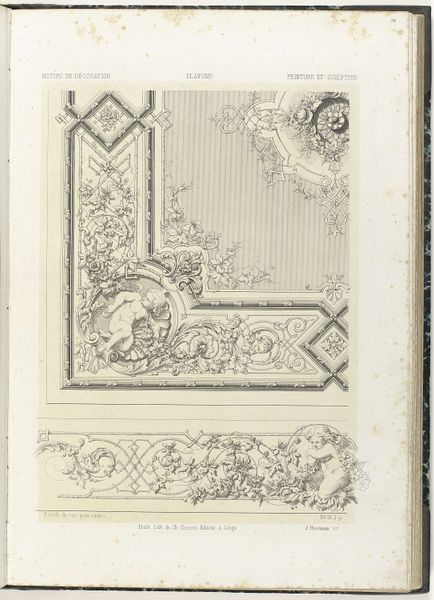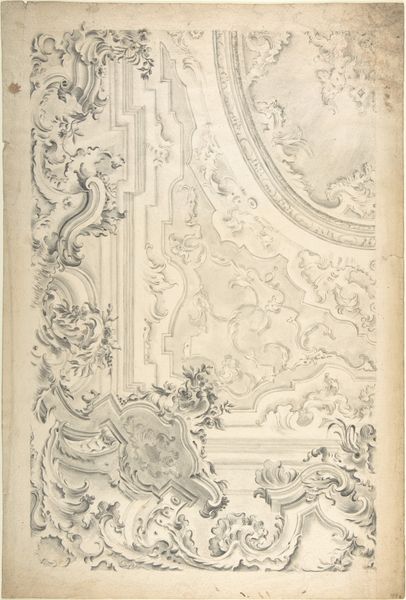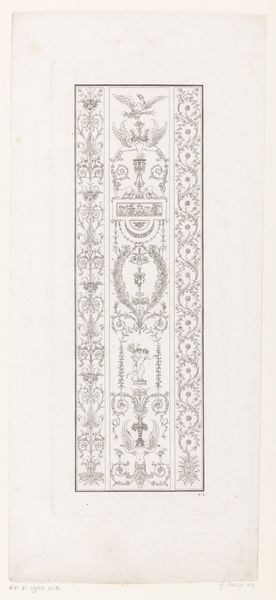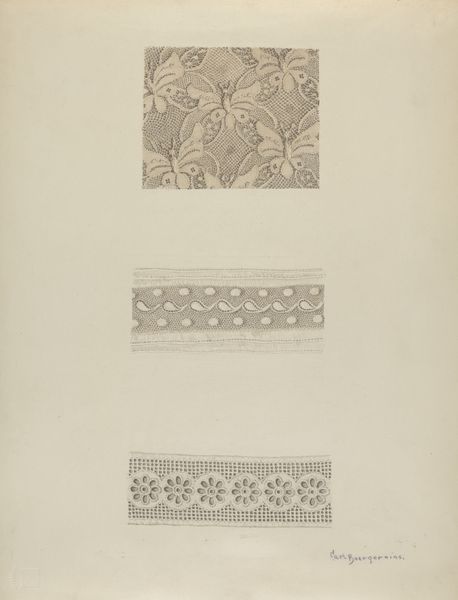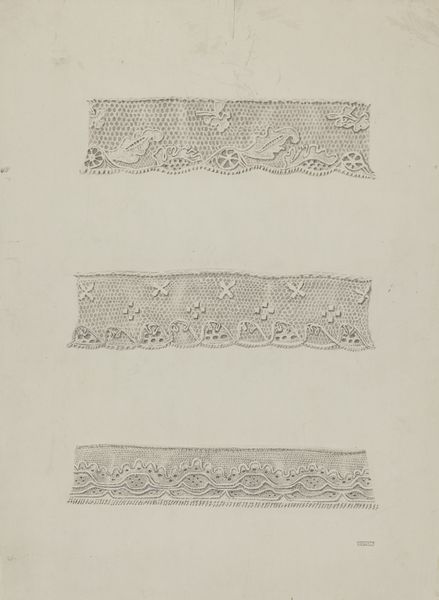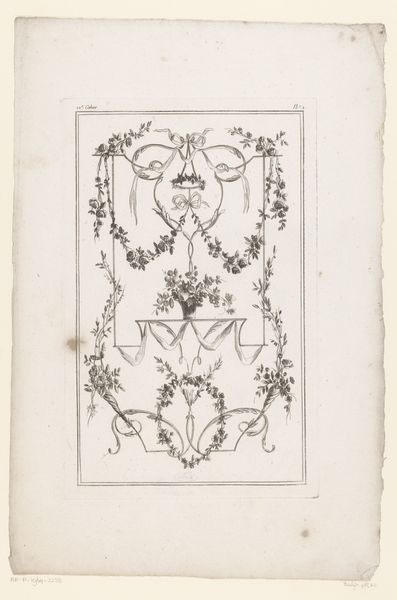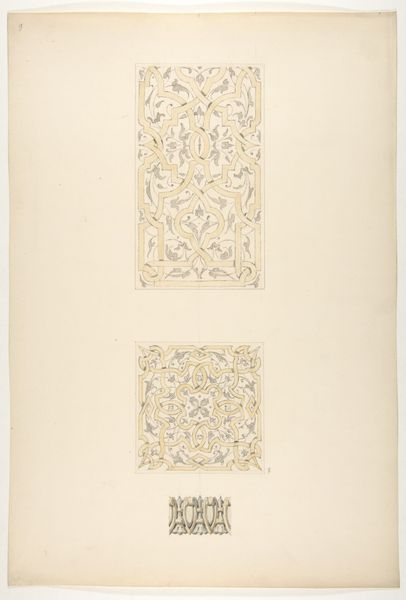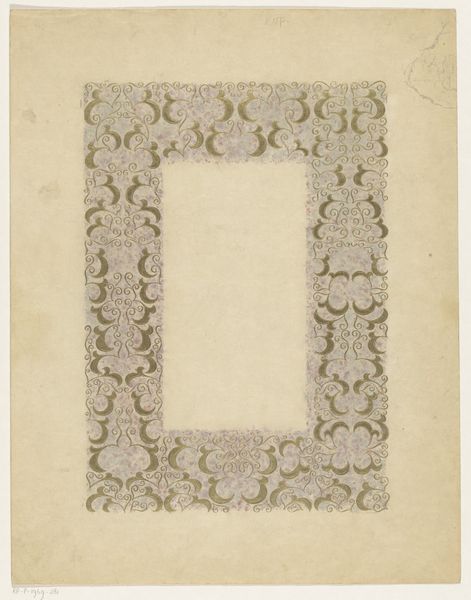
drawing, paper, pencil
#
drawing
#
paper
#
geometric
#
pencil
#
decorative-art
Dimensions: overall: 35.1 x 25.3 cm (13 13/16 x 9 15/16 in.)
Copyright: National Gallery of Art: CC0 1.0
Editor: Here we have Edward Loper's "White Quilted Coverlet," a pencil drawing on paper, created around 1936. The delicacy of the lines really strikes me. It feels so intimate, like a peek into someone's personal project. How do you interpret this work? Curator: Well, the recurring motifs immediately capture my attention. Notice the strategic use of grapevines. Grapes are potent symbols, aren't they? Representing fertility, abundance, and, of course, transformation, given its use in wine. But the quilt itself is also significant, gesturing towards ideas of domesticity, comfort, and even cultural memory passed down through generations. Does it perhaps make you consider who might have made or used a quilt like this? Editor: Absolutely. Thinking about the maker changes my perspective. This isn't just a pretty pattern; it embodies care, tradition, and perhaps even a sense of identity. So the pattern choice wouldn't have been accidental either? Curator: Precisely. Loper, though a draughtsman here, documents a cultural artifact pregnant with symbols. What kind of memories might someone associate with that repeated image, not just for those that created it but consumed its use? It’s about seeing how images, even those we consider 'decorative,' are saturated with emotional and cultural weight. What did you imagine before versus after thinking about the historical weight, though personal and private as it may be? Editor: I guess I didn't see it as such an active object. Now, knowing it can represent entire histories or experiences changes how I view these more traditional art forms. Curator: It shows you how cultural memory persists through images and that even sketches hold so much significance if we allow it. Editor: This has offered so many new ideas about how to approach images and read meaning. Thank you!
Comments
No comments
Be the first to comment and join the conversation on the ultimate creative platform.
